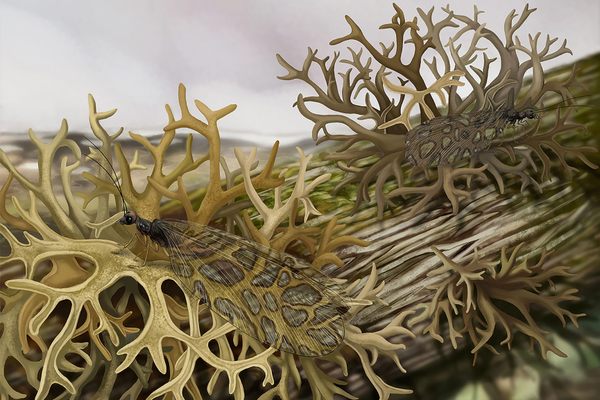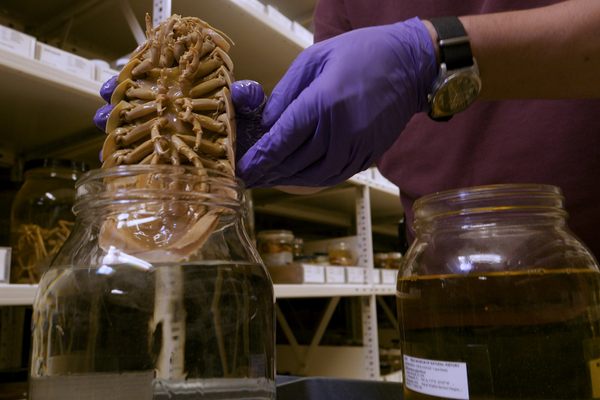Found: A 99-Million-Year-Old Millipede, Perfectly Preserved in Amber
The newly described species has a five-unit compound eye and an unbristled butt.

Just shy of 100 million years ago in what is now Myanmar, a small but long critter found itself stuck in a sticky spot of tree resin. It died there, its slightly iridescent body coiled into the shape of an S and pristinely preserved in lemon-yellow amber. When scientists recently unearthed its fossilized body, they realized the arthropod was a newly described species of millipede with such a strange morphology that it revises what scientists previously understood about when and how millipedes evolved. These findings appear in a new study published May 2, 2019, in the journal ZooKeys.
In fact, the 99-million-year-old specimen is so unusual that it necessitated the creation of an entirely new suborder in the current tree of millipede classification, Pavel Stoev, a researcher at Bulgaria’s National Museum of Natural History and the study’s lead author, said in a statement. For context, the small but mighty field of millipede research has only seen a handful of new suborders established over the past 50 years. So the researchers named the unusual new species Burmanopetalum inexpectatum, with the latter word translating into “unexpected” in Latin.
In order to verify that Burmanopetalum did indeed mark a new species, the researchers used 3D X-ray microscopy to construct a virtual model of the 0.3-inch-long specimen, including its skeleton, internal anatomy, and healthy abundance of tiny legs. The millipede’s uncannily perfect preservation allowed the researchers to observe the tiniest morphological traits that rarely show up in fossils.

“It came as a great surprise to us that this animal cannot be placed in the current millipede classification,” Stoev said in a statement. One of the unique morphological features that set this millipede apart from the rest of the pack includes an eye composed of five ommatidia (the optical units that make up a compound eye). By comparison, many other millipede orders boast just two or three ommatidia. Another distinction is the arthropod’s unusually smooth, unbristled hypoproct (the spot located in between the anal opening and the genitalia)—an evolved kind of bikini wax, if you will. Apparently modern millipedes are significantly bushier down there.
This millipede was the only one of the order Callipodida identified among the other 529 millipede specimens found in the same amber deposit. Scientists have never before discovered a Callipodidan in Myanmar, so this new fossil extends the historical range of the order into Southeast Asia. “In the past few years, nearly all of the 16 living orders of millipedes have been identified in this 99-million-year-old amber,” the fossil arthropod expert Greg Edgecombe of the Natural History Museum in London said in a comment. Now, this strange Callipodidan joins the club.















Follow us on Twitter to get the latest on the world's hidden wonders.
Like us on Facebook to get the latest on the world's hidden wonders.
Follow us on Twitter Like us on Facebook